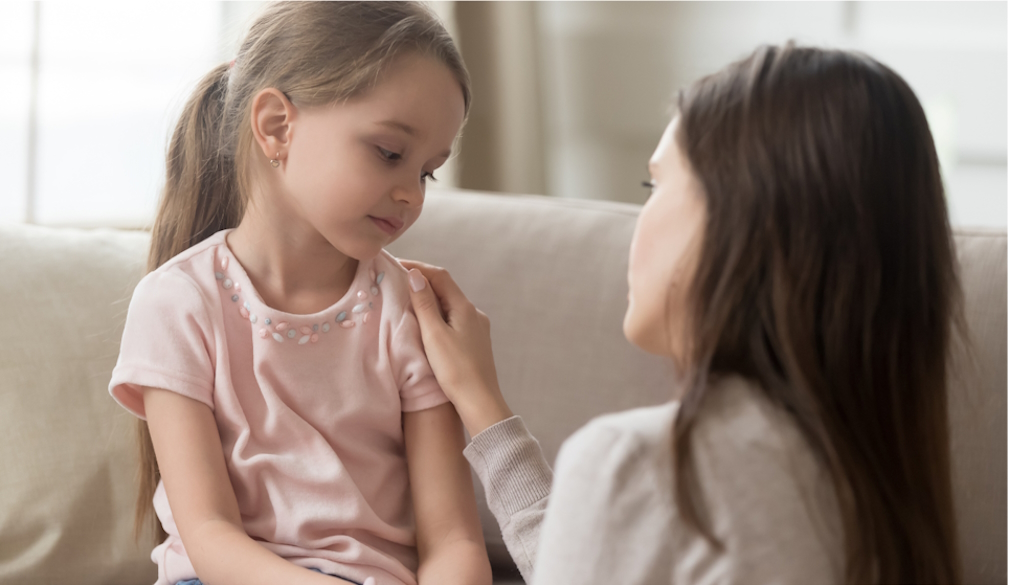Dreading the school or daycare drop-off? How to handle it when your child doesn’t want you to go
- Written by Kylie Ridder, Lecturer in Early Childhood Education, Murdoch University

You’re doing daycare or school drop-off, you’re already late for work, and your child’s lip starts to quiver. A tremble turns into a wail, a wail into heart-rending cries as they clutch at your leg.
Eventually, you have to leave and get to work. You spend the rest of the day feeling absolutely wretched[1]. Sound familiar?
Each child is different and not every child will struggle at drop-off. But if yours does, remember it’s age appropriate for young children to feel strong emotions when transitioning to a new environment[2], adapting to unfamiliar places, people, expectations and routines. In extreme cases, it develops into separation anxiety disorder, which can impact about 4% of preschoolers and school-age children[3].
In fact, there’s a lot you can do to make drop-off less stressful for your child. One useful approach is to think about what the NSW Department of Education describes as the four “stages[4]” of transitioning to school or daycare: preparation, transfer, induction and consolidation.
Preparation is key
Before your child starts, try to build relationships[5] with other children in your area. Having even one familiar face at drop-off can comfort your child.
Consider:
Where possible, allow your child to get familiar with school or daycare (also known as an “early learning and development centre”) in advance. See if you can visit several times and play in the playground before your child starts there.
Take a few “drive by” visits in the car, or walk past and chat with your child about what people are doing in school or daycare, and some of the routines of the day.
For children about to start school, prepare lunchboxes and practice opening and eating them at home.
Read picture books about starting daycare or school – such as Maddie’s First Day[6] by Penny Matthews and Liz Anelli – to discuss the key themes together.
Spending unhurried time in the new environment before the “first day” allows children to explore the environment and build relationships with other children and educators while feeling safe and comfortable.
Many daycare centres can facilitate several visits like this. Schools will often have orientation programs, and some will allow community access to facilities like the playground or oval out of school hours.
If you’ve already got a child at school or daycare, try to bring your younger child along when you drop off or pick up their big brother or sister.
Routines can help with a smooth transfer
Establishing a routine[7] during drop-off may help children settle into a new environment. Predictability can help children feel safe and secure.
An example routine might include putting their bag away, reading a book together, playing with playdough, giving a kiss and hug and then leaving. This might mean getting to school or daycare a bit earlier than you’d intended.
Try to keep this routine unhurried and focused on your child.
If drop-off is either too long or too short, children can experience overwhelming emotions. So try not to drop and go abruptly if you can avoid it. Always let your child know when you are leaving, as sneaking off can cause mistrust and anxiety.
Avoid lingering for a long time on one day, and a short time on another day; this can make things less predictable for your child. Leaving, then returning repeatedly can also introduce uncertainty.
Many early learning and development centres use a primary caregiver model[8], where one educator is responsible for most of the care routines for one child.
Building a strong relationship with this educator means they’re more likely to recognise your child’s small cues, and your child is more likely to be comforted during drop-off.
Talk to school or the early learning centre about bringing in a toy, photograph, or comfort item, which helps children maintain the connection with home.
Support the induction process
Educators and teachers work hard to create a sense of belonging[9] for children in this new environment.
This means building on children’s strengths and establishing relationships so children feel comfortable.
A strength-based approach views children as already being learners[10] as they enter early childhood education, focusing on the knowledge and skills they bring.
So chat to the educators and to your child about what happens at care or at school, so you can congratulate your child on how well they’re doing. Find out more about what they do all day, and encourage them to see daycare or school as “their place”.
Consolidating
The transition process is complex and dynamic. A child who initially transitioned happily may regress[11], requiring you and the educators to revisit the process.
Many children who appear upset at drop-off will calm down quickly. But a child experiencing prolonged separation anxiety disorder[12] may require specific strategies to transition successfully. Your child’s educator will let you know if this is an issue.
Taking time to build relationships with the teachers and educators will allow you to work together.
Each child is different
Remember every child is an individual, and adapting to a new environment can be different for everyone.
Whether children and families are anxious or excited, transitioning from home to school or daycare means change.
Change, although hard at first, can open the window to new relationships, environments and experiences.
Understanding the process and working to minimise the impact will result in a happy start to early childhood education.
References
- ^ absolutely wretched (www.taylorfrancis.com)
- ^ new environment (www.acecqa.gov.au)
- ^ 4% of preschoolers and school-age children (raisingchildren.net.au)
- ^ stages (education.nsw.gov.au)
- ^ build relationships (www.education.gov.au)
- ^ Maddie’s First Day (www.readings.com.au)
- ^ routine (beyou.edu.au)
- ^ primary caregiver model (www.acecqa.gov.au)
- ^ sense of belonging (www.edresearch.edu.au)
- ^ already being learners (research.acer.edu.au)
- ^ regress (www.education.vic.gov.au)
- ^ separation anxiety disorder (raisingchildren.net.au)
- ^ all_about_people/Shutterstock (www.shutterstock.com)
















